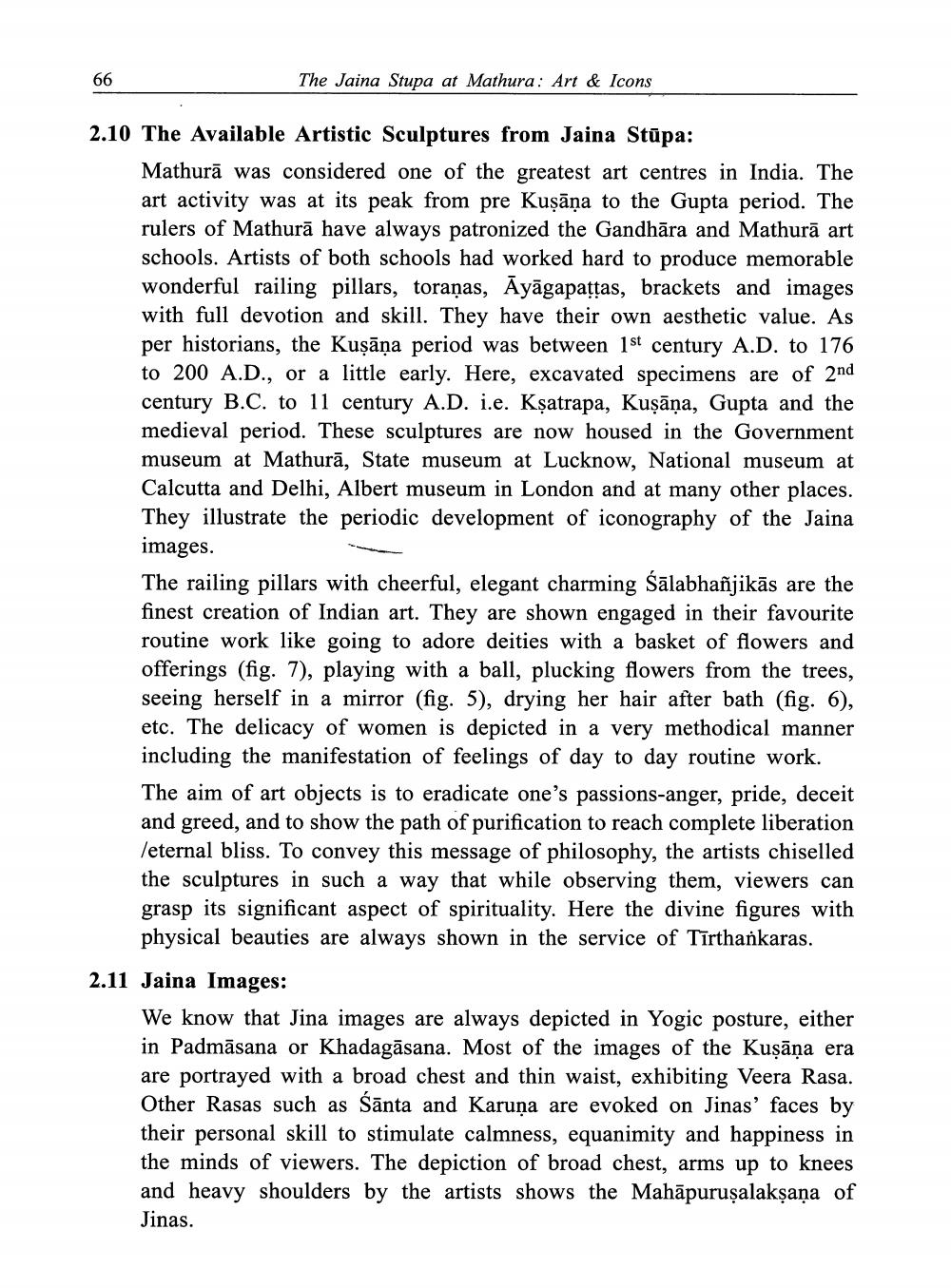________________
66
The Jaina Stupa at Mathura: Art & Icons
2.10 The Available Artistic Sculptures from Jaina Stūpa:
Mathurā was considered one of the greatest art centres in India. The art activity was at its peak from pre Kuşāņa to the Gupta period. The rulers of Mathurā have always patronized the Gandhāra and Mathurā art schools. Artists of both schools had worked hard to produce memorable wonderful railing pillars, toraņas, Āyāgapattas, brackets and images with full devotion and skill. They have their own aesthetic value. As per historians, the Kuşāņa period was between 1st century A.D. to 176 to 200 A.D., or a little early. Here, excavated specimens are of 2nd century B.C. to 11 century A.D. i.e. Kşatrapa, Kuşāņa, Gupta and the medieval period. These sculptures are now housed in the Government museum at Mathurā, State museum at Lucknow, National museum at Calcutta and Delhi, Albert museum in London and at many other places. They illustrate the periodic development of iconography of the Jaina images. The railing pillars with cheerful, elegant charming Śālabhañjikās are the finest creation of Indian art. They are shown engaged in their favourite routine work like going to adore deities with a basket of flowers and offerings (fig. 7), playing with a ball, plucking flowers from the trees, seeing herself in a mirror (fig. 5), drying her hair after bath (fig. 6), etc. The delicacy of women is depicted in a very methodical manner including the manifestation of feelings of day to day routine work. The aim of art objects is to eradicate one's passions-anger, pride, deceit and greed, and to show the path of purification to reach complete liberation /eternal bliss. To convey this message of philosophy, the artists chiselled the sculptures in such a way that while observing them, viewers can grasp its significant aspect of spirituality. Here the divine figures with physical beauties are always shown in the service of Tīrthankaras.
2.11 Jaina Images:
We know that Jina images are always depicted in Yogic posture, either in Padmāsana or Khadagāsana. Most of the images of the Kuşāņa era are portrayed with a broad chest and thin waist, exhibiting Veera Rasa. Other Rasas such as Sānta and Karuna are evoked on Jinas' faces by their personal skill to stimulate calmness, equanimity and happiness in the minds of viewers. The depiction of broad chest, arms up to knees and heavy shoulders by the artists shows the Mahāpuruşalaksana of Jinas.




